Learn about Salesforce Journey Builder and generate greater visibility over your customer touchpoints and interactions.
Marketers are more determined than ever to gain a holistic view of the customer journey.
The data backs it up. In this study, marketers declared “creating a cohesive customer journey across channels and devices” a top priority and challenge.
Enter Salesforce Journey Builder.
With Journey Builder in Salesforce, marketers can create, automate, and optimise customer journeys to engage customers, build loyalty, and maximise growth.
Keep reading as we unpack the capabilities of Journey Builder in Salesforce and share other customer journey-tracking tools that can help you increase visibility over your sales and marketing effectiveness.
💡 TL;DR
Salesforce Journey Builder has made it possible to create and automate customer journeys across multiple channels.
While Salesforce Journey Builder has a ton to offer, it does have one fundamental limitation. It doesn’t consider the customer journey before a lead is created. This is a significant challenge for marketers because the customer journey begins long before a conversion takes place. Without visibility over all touchpoints, marketers are missing out on valuable insights that enable them to increase leads and revenue.
Fortunately, there are tools out there that can help marketers track the customer journey before a lead is created. Ruler Analytics, for example, tracks anonymous visitors to your website using first-party data. It builds a profile of their touchpoints and interactions over subsequent visits. When a lead converts, Ruler sends this data to Salesforce, giving you a more complete view of the customer journey. Book a demo to see how it tracks the customer journey, from the initial touchpoint to the final conversion.
Journey Builder is a robust marketing automation tool in Salesforce Marketing Cloud that empowers businesses to create, manage, and optimise personalised customer journeys.
These journeys can encompass a wide range of interactions, from initial contact to post-purchase engagement and beyond.
Journey Builder essentially acts as a visual canvas where you can design and automate multi-step marketing campaigns, delivering relevant content and messages to your customers at precisely the right moments.
Here are some of the benefits of using Salesforce Journey Builder:
Salesforce Journey Builder works by creating a visual representation of a customer journey. This journey can be divided into stages, and each stage can have multiple touchpoints and interactions. Touchpoints can be anything from an email campaign to a social media post to a website visit.
When a customer enters a journey, they are assigned to a specific stage. The next touchpoint that they receive will depend on their location in the journey and their interactions with the brand.
For example, a customer who has just signed up for a newsletter might receive a welcome email. If they then open the email and click on a link, they might be sent to a landing page with more information about the product or service.
There are three types of journeys that you can build in Salesforce Journey Builder:
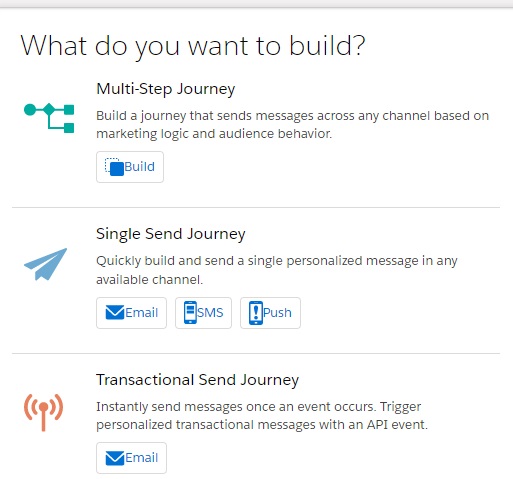
Multi-step journeys in Salesforce are a type of journey that automates a series of customer interactions over time. These journeys can include multiple channels, such as email, social media, and SMS, and can be customised based on customer interactions or attributes.
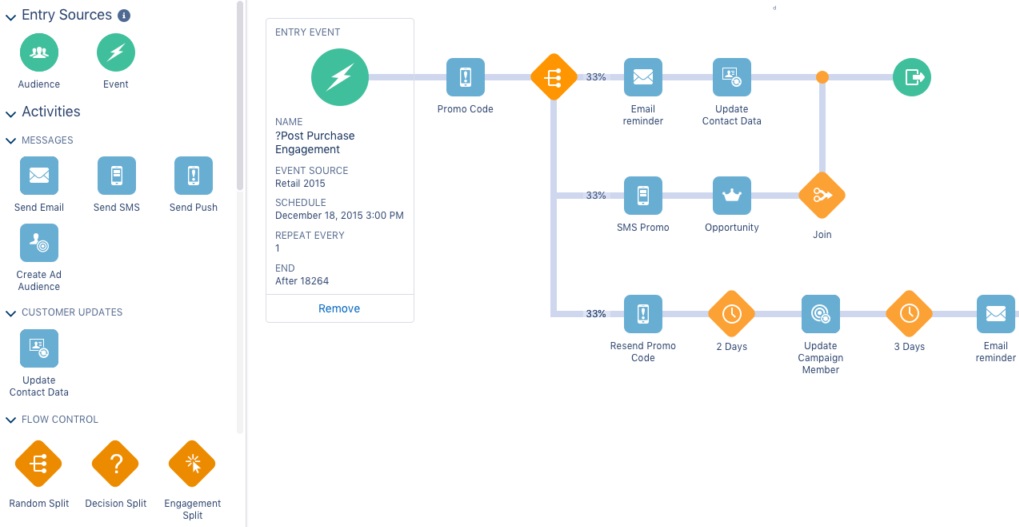
Multi-step journeys are a powerful tool for marketers to use to engage with customers and achieve their marketing goals. They can be used to:
A single send journey in Salesforce is a type of journey that automates the sending of a single message to a target audience. It is a simple way to send a marketing email, transactional email, or notification to a group of contacts.
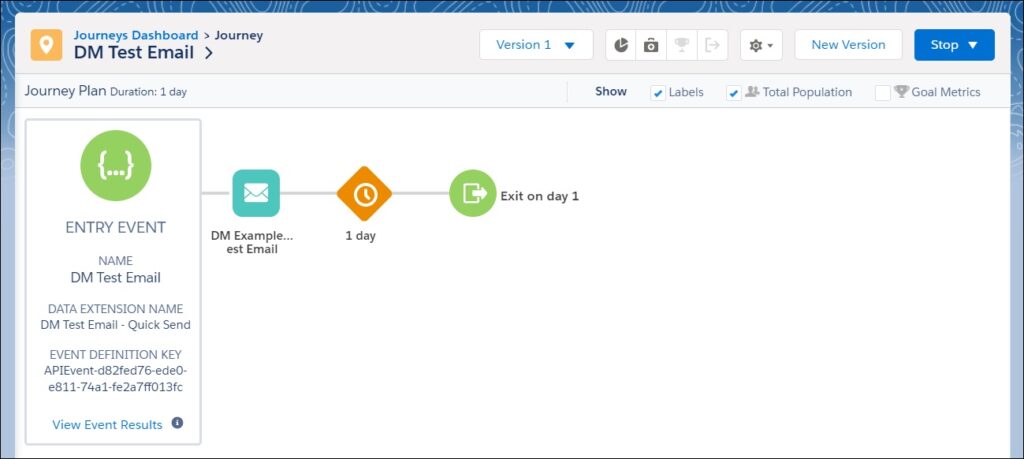
Single send journeys are typically used for sending:
Last up, we have Transactional Send Journey. These journeys are designed to automate the delivery of transactional messages, such as order confirmations or shipping notifications.

Unlike marketing or promotional emails, which aim to engage or persuade, transactional emails are not intended to sell or promote anything.
Journey Builder is a powerful tool for creating and managing customer journeys, but it’s limited in its ability to track customers’ pre-conversion.
Salesforce Journey Builder doesn’t consider the customer journey before a lead is created. This is a fundamental issue because the customer journey begins long before a conversion takes place.
Customers may visit your website multiple times, read your blog posts, and interact with your social media pages before they decide to make a purchase or convert into a lead.
Journey Builder can’t track these touchpoints, which means that you’re missing out on valuable insights about your marketing effectiveness.
However, there is good news. Marketers can use third-party tracking tools to fill in the gaps and gain a more complete understanding of their customers’ journey.
Here’s a list of tools to get you started:
Ruler is a measurement platform that helps businesses track customer journeys and measure the impact of their marketing campaigns.
It does this by tracking anonymous visitors to a website using first-party data and then matching any leads, conversions, or sales back to the marketing touchpoints that generated them.
Ruler integrates with Salesforce to bring together all of your marketing and customer data in one place, allowing you to see how your marketing efforts are impacting sales pipeline and revenue.
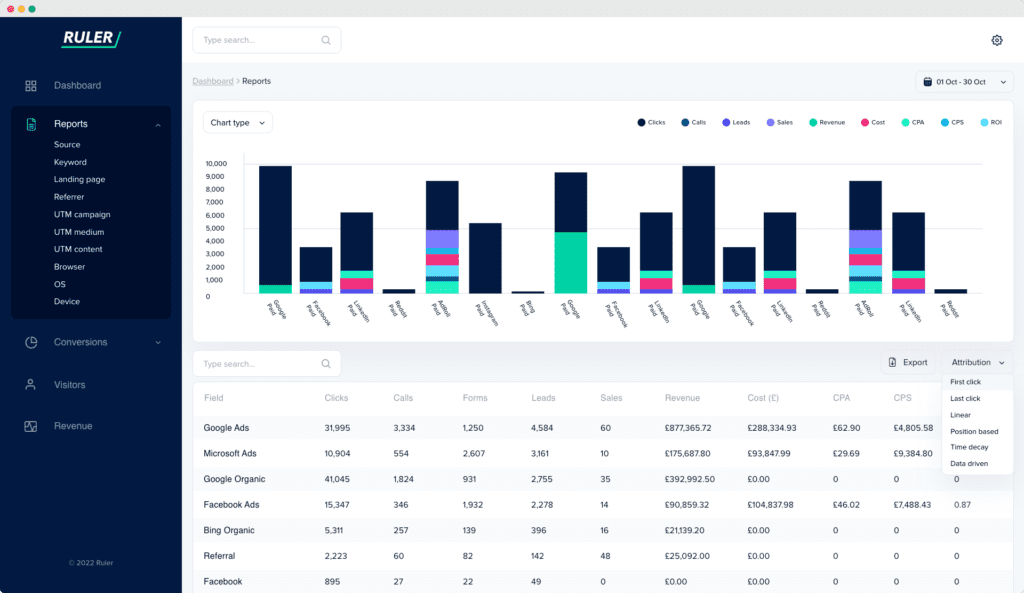
Features available in Ruler:
Visitor tracking: Assigns a unique identifier to each anonymous visitor, records the source of their visit, and tracks their subsequent visits.
Multi-touch attribution: Provides a variety of attribution models, such as single-touch, multi-touch, and data-driven attribution, to help you understand how different marketing touchpoints contribute to revenue.
Marketing mix modelling: Uses rigorous statistical methodology and machine learning to measure the impact of invisible touchpoints (e.g. ad impressions and TV views).
Budget optimiser: Determines the point at which the ROI of your marketing channels begins to decrease so you can adjust your spending accordingly.
Ruler offers a variety of pricing plans, starting at £199 per month. The price of each plan depends on the features you need and the number of website visitors you have. You can save 20% by paying annually, and there are special rates available for agency partners.
💡 Have any questions? We’re happy to help!
Multi-touch attribution tools like Ruler are a great way to fill in the gaps missing in Salesforce Journey Builder. Ruler can give you a more complete picture of how your marketing campaigns are performing and help you make better decisions about how to improve them. Don’t take our word for it. Book a demo and see it action for yourself.
Adobe Customer Journey Analytics is a cloud-based analytics solution that helps businesses understand their customers’ journeys across all channels.
It provides a unified view of customer data, including website, app, email, and offline data, so you can see how customers interact with your brand at every touchpoint.
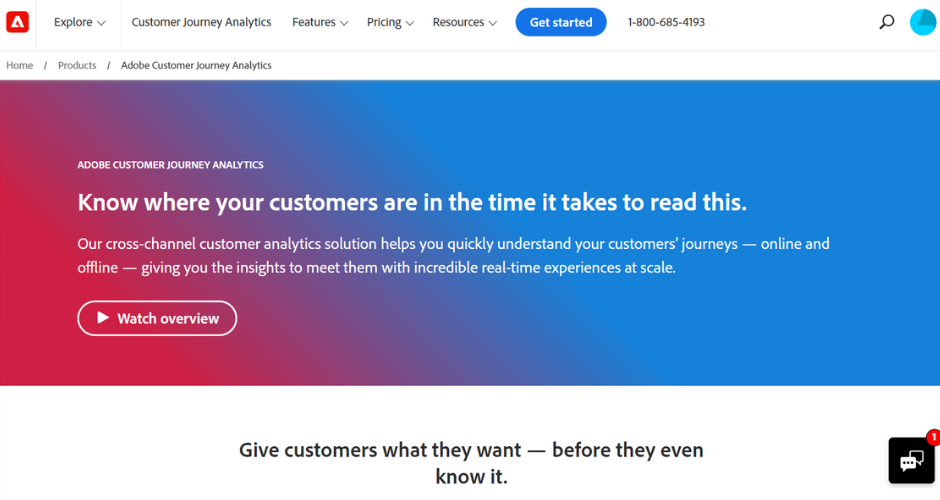
Adobe CJA offers a variety of features to help businesses track customer journeys, including:
The pricing for Adobe Customer Journey Analytics depends on the size of your business and the features you need. The pricing is structured in a tiered system, with each tier offering a different set of features and capabilities.
Like Ruler, Attribution App is an attribution platform that helps businesses track the customer journey across multiple channels and devices.
Related: Attribution App alternatives and competitors of 2022
It does this by collecting data on all of the touchpoints that a customer has with a brand, such as website visits, social media interactions, and email opens.
Attribution App integrates with various data sources and marketing platforms such as Google Analytics and Salesforce to consolidate data from different channels to provide a holistic view of the customer journey.

Attribution App offers several features that make it a valuable tool for customer journey tracking, including:
Attribution App’s pricing is not publicly available. You’ll need to contact the company to receive a quote.
CallRail tracks the customer journey by assigning a unique phone number to each marketing campaign or source, such as an ad or mailer. This allows CallRail to track which marketing channels are driving the most phone calls and leads.
CallRail also offers visitor tracking, which assigns a unique phone number to each individual who visits your website after an online search. This phone number follows them click by click over subsequent visits.
It collects data on all of these calls, including the caller’s phone number, the source of the call, the duration of the call, and the call’s outcome (e.g., sale, lead, no answer).

CallRail also offers a variety of other features that can help you track the customer journey:
CallRail offers five pricing plans: Starter, Growth, Pro, Enterprise, and Enterprise Plus. The pricing plans differ in the number of features and the number of calls included.
💡 Pro Tip
Reporting in CallRail only goes so far by showing how many inbound calls are generated per campaign and source. It provides little to no insight into what happens to leads once they’re handed off to sales. By integrating Ruler, you can track the activities of your CallRail leads across the entire customer journey and use that insight to optimise your campaigns for better results.
Improve your CallRail reports with Ruler’s attribution
CANDDi is a website visitor tracking tool that helps businesses understand their customer’s journey from first interaction to conversion.
It does this by tracking website visitors’ behaviour, including which pages they visit, how long they stay on each page, and where they come from.
CANDDi also provides insights into the customer journey by identifying individual visitors and tracking their activity over time.
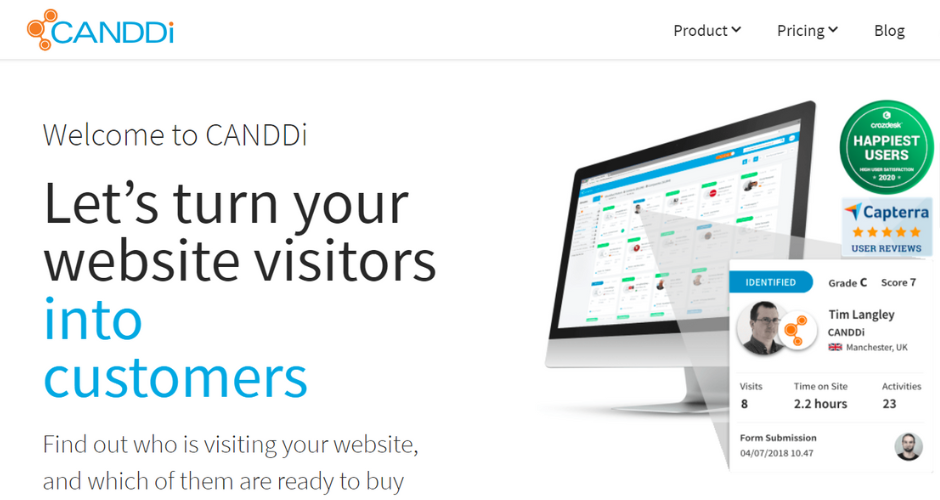
With the help of CANDDi, you can track the customer journey in a number of ways:
CANDDi offers 3 pricing plans: Starter, Premium, and Pro. The pricing plans differ in the number of features and the number of website visitors tracked.
Nexidia Analytics by NICE tracks the customer journey by collecting data from a variety of sources, including contact centre, website and social media interactions.
It uses this data to create a holistic view of the customer journey, from initial contact to final purchase. This data is then used to identify areas where the customer experience can be improved, such as long wait times or dropped calls.
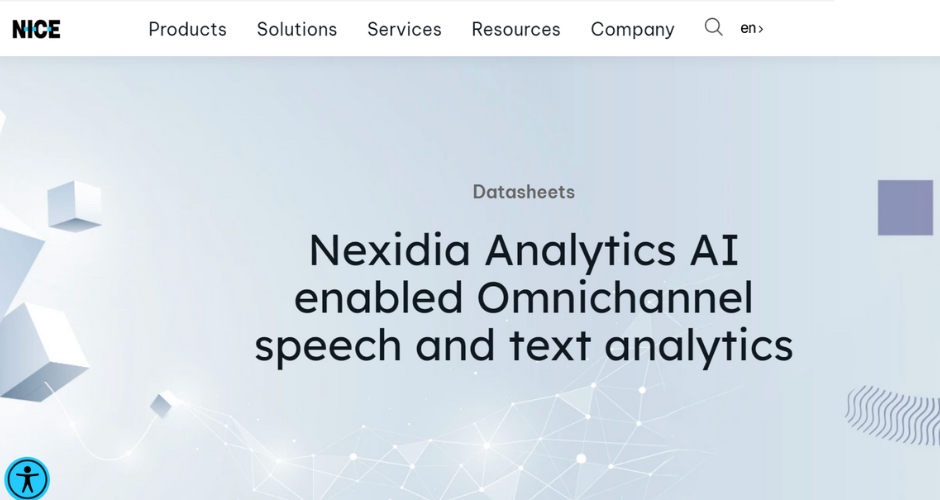
Nexidia Analytics pricing depends on the number of users, the number of channels, and the features you need. You can contact NICE for a personalised quote.
Last on our list, we have Woopra.
It’s a customer analytics platform that helps businesses track and analyse the customer journey across various touchpoints. Woopra provides a comprehensive view of how customers interact with a company’s website, app, and other channels.

Here are some specific ways that Woopra can help track the customer journey:
Woopra offers three pricing plans: Core, Pro, and Enterprise. The Core plan is free and includes up to 500,000 actions per month, 90 days of data retention, and standard support. Paid subscriptions start from $999.
There you have it, our guide on Salesforce Journey Builder.
If you are looking for a tool to automate your marketing campaigns and track customer engagement across multiple channels, Salesforce Journey Builder is a great choice.
However, if you’re after a tool that can help you measure touchpoints pre-conversion, then you may want to consider one of the other tools we’ve mentioned.
Take Ruler, for example. Ruler tracks anonymous visitors to your website using first-party data and builds a profile of their touchpoints and interactions over subsequent visits. Whenever a lead converts, Ruler sends this data to Salesforce, giving you a more holistic view of the customer journey.
Learn more about how Ruler Analytics enriches Salesforce with attribution and marketing touchpoint data by downloading our eBook. Or, book a demo to see Ruler in action.
